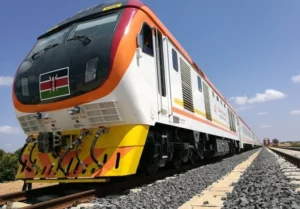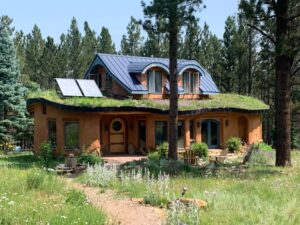The 5:35 pm Train to Kikuyu town
Before the renovations, Nairobi Central Railway Station used to move at its own frequency. The station had refused to catch up with the rush in the nearby bus station.
Once you walked through the arched gateways, a new world came into sight. It started with three checks – luggage, body, and ticket. Then you’d see railwaymen in green dust coats walking with VHF radios in one hand and a spanner in the other.
One called out on the radio and the other would bend under the coaches, tap on something, listen for a few seconds and then proceed to the engine. Here he waited for another call while scanning the locomotive. Once satisfied, He said something on the radio before disappearing into the railway graveyard. Ticket attendants would laze inside the station – some sitting on the old benches and others walking in and out of the station master’s office.
Nairobi Central Railway Station
The railway never loses its magical feel, and as long as the locomotive pulls the coaches, a traveler will continue to experience the unique life along the line. To see and listen to the unfiltered soul of a country, a city, a town, or a village!
With the new renovations of the Nairobi Central Station, I wanted to confirm whether anything had really changed. And so on that Friday evening, I walked to the Station for a train ride to Kikuyu.
Outside the station ticket clerks who doubled up as conductors lined up behind a barrier calling out to passengers. One of the clerks fixed her eyes on me and called out;
Her: “Kuja Brathee nikuuzie. Unaenda mpaka wapi?”
Me: “Kikuyu”
Her: “Kikuyu mwisho?”
Me: “Eeeh. Ni Pesa ngapi?”
Her: “Forte bob”
She scribbled something on a ticket and handed it to me in exchange for Forty shillings and turned to an approaching group.
I walked past the ticket barriers, through a tunnel and a left exit to platform 3 where Kikuyu Buffalo was waiting. Along the same platform facing the opposite direction was the commuter train to Embakasi village and on the parallel platform number 2 was Ruiru Eagle to Umoja, Dandora, Mwiki, Githurai, Kahawa, and Ruiru.
The “Refurbished” Kikuyu Buffalo Train
Kikuyu Buffalo had seven passenger coaches. I settled for the middle one and sat near the doorway since there was no longer a window seat. The coaches were new with sliding windows above plastic-wrapped seats. There was a “No smoking” sign next to a fire extinguisher and a first aid kit. Hawking was prohibited and the train no longer had a “church car”.
The passengers had new character traits too. I expected to see the elderly man listening to six o’clock news on the loudspeaker of his mobile handset. He wasn’t there. I searched for passengers chatting up their buddies and random strangers and found none. No one listened to Christina Shusho or Fadhili Williams. Almost everyone sank their eyes into their phones and this reminded me of a prophecy by Simon & Garfunkel in their song “Sound of Silence”.
And in the naked light I saw, Ten thousand people, maybe more, People talking without speaking, People hearing without listening, People writing songs that voices never share, And no one dared, Disturb the sound of silence.
The announcement on the loudspeaker informing us that the train was about to depart drifted my attention from the coach.
Gari la Moshi linaloelekea Kikuyu kupitia Kibera na Dagoretti. Kwa hivi sasa Hilo gari liko katika Laini ya tatu. Hilo gari liko tayari na linaondoka.
On the Train ride home
On the dot of five-thirty-five, the train made its way out of the station dragging the coaches past the “refurbished” century-old footbridge and the railway graveyard. After the Uhuru highway bridge was the railway golf course. Here the “lucky ones” hit golf balls and the overloaded caddies would chase after them. These men would then stop and place the freehand on their waists and watch the train go by. From that distance it was hard to tell if their eyes shouted pity towards the “God Forsaken passengers” or they admired the old engine.
The movie outside seemed to be a replay of what I had seen before. Still, Nyayo Stadium swimming pool was derelict and marabout storks camped on top of acacia trees.
The train snaked and puffed as it made its way towards Kibera, dividing Madaraka and Upperhill. Behind the walls of Madaraka’s nice apartments were temporary structures with roofs made of rusty iron sheets and walls of assorted materials – boards, oily sacks, worn clothes, and motor vehicle parts.
Kikuyu Buffalo At the Heart of Kibera
The train sounded its horn as we approached Kibera where the welcome was a Posho mill, a pay toilet, and a dumpsite where dogs and goats browsed through the garbage in harmony.
Choo = 5/-
Bafu=10/-
The first stop was at Mashimoni/Gatwekera. A number of passengers got off and almost an equal number boarded. We started again and the moans of the locomotive were subdued by the loud music from shops next to the line. In these shops were wares of all kinds; clothes, electrical appliances, mattresses, and more.
At Kibera town center there was a crusade going on. Agents of the good news were busy recruiting souls to the kingdom. Not far from the alter a group of children stopped skipping a rope and started singing while waving at the train – to passengers who gave no response.
The train exited Kibra as fast as it got in. The forest of rusty houses, smelly trenches, and naughty boys throwing stones at the train was behind us. The only smell of lawlessness and hope was the eloquent signs on the wall just before the Old Kibera Railway Station.
“Onyancha’s baz” – with an arrow pointing to a makeshift cardboard “house”.
“Jesus saves”
“Two wrongs don’t make a right”
“Together kama Handshake”
Kibera railway station served as a trailer to the next scene, one that does not prepare a traveler well enough. In less than five minutes the landscape changed to a countryside setting. I saw men in gumboots and farm tools on their shoulders. Voices of children calling their siblings met the mooing of cows and together the sounds traveled between trees. Past Jamhuri the train went through a tunnel and popped out at Satellite where a majority of passengers alighted. And with them, the Sun set!
Sunset at Satellite
After Satellite the conductor in our coach started asking for tickets and ripped them halfway along their length. As he walked along, he mentioned that tickets for Kshs 35 had expired.
“Kama ulilipa thate five ujue imeisha, watu wenye nataka Kwa hii train ni wa forte peke yake. Ama ulipe”.
The sunset took with it some sense of sight. I walked to the last coach and found a corner seat, half-closed my eyes, and dived into a fantasy world where every part of the country was connected by rail. The half-empty train, smooth ride, cool wind breeze, and scents of eucalyptus encouraged this line of fleeting thoughts.
I opened my eyes to follow the strong smell. The train had stopped at Dagorretti Market where a slaughterhouse on the left had closed for the day.
Past the slaughterhouse, the train went deeper into the green country. Unlike in Kibera where the railway barrier was a series of houses with dry mud falling of the wattle walls, here it was Napier grass and green scrubby bushes.
To Kikuyu Railway Station
The Buffalo made two more brief stops; one at what I took to be Thogoto and the other one just after A104 at Gitaru. By now darkness had already checked in.
From Gitaru the train picked up speed in a curve crossing the A104 for the second time towards the Southern Bypass. I watched the crescent moon and the infinite lights along the bypass and thought they could make a perfect background for an indie-folk song. After a few minutes of parallel chase with trucks, the buffalo dissected the southern bypass and arrived at the newly rehabilitated Kikuyu station at quarter past seven.
I gave the coach another look and felt melancholic. I knew I would miss them: “sim sim”, “tropycos nne kumi” and “njugu” in paper cones, the sermon in the church car, old men listening to six o’clock news on a loudspeaker, and the open window by the seat. But I was still hopeful. Some fantasy thoughts convinced me that the old coaches will be pulled again. That I would slide on the edge of those worn-out face-me seats, rest my head on the windowsill, and dive into retrospect once more.
Kikuyu Buffalo Train Schedule and Stops.
The Evening Train: Nairobi Central Station to Kikuyu Town
Nairobi Railway Station: 5:35 pm
Gatwekera: 5:55 pm
Kibera Town Center: 6:00 pm
Kibera Railway Station: 6:10 pm
Satellite: 6:20 pm
Lenana: 6:28 end of Kshs 35
Mutu-ini: 6:35 pm
Dagoretti Station: 6:40 pm
Dagoretti Market: 6:45 pm
Gitaru: 7:05 pm
Kikuyu Station: 7:15 pm
Morning Train Schedule: Kikuyu to Nairobi Central Station
Kikuyu Station: 6:00 am
Gitaru: 6:18 a.m
Thogoto: 6:10 a.m
Dagoreti Market: 6:27 a.m
Dagoreti Station: 6:33 a.m
Mutuini: 6:38 a.m
Lenana: 6:43 a.m
Satelite: 6:50 a.m
Kibera Station- 7:07 a.m
Kibera Town Center:
Gatwekera: 7:12 a.m
Mashimoni: 7:18 a.m
Nairobi Station: 7:35 a.m



